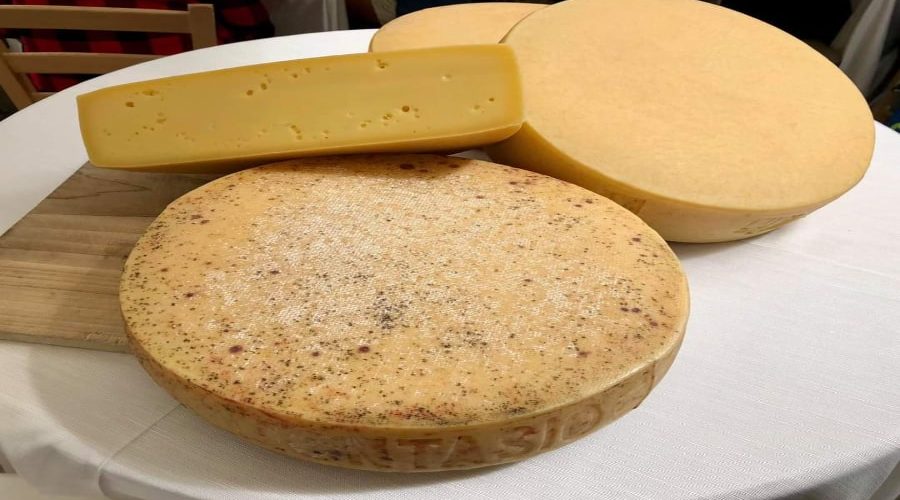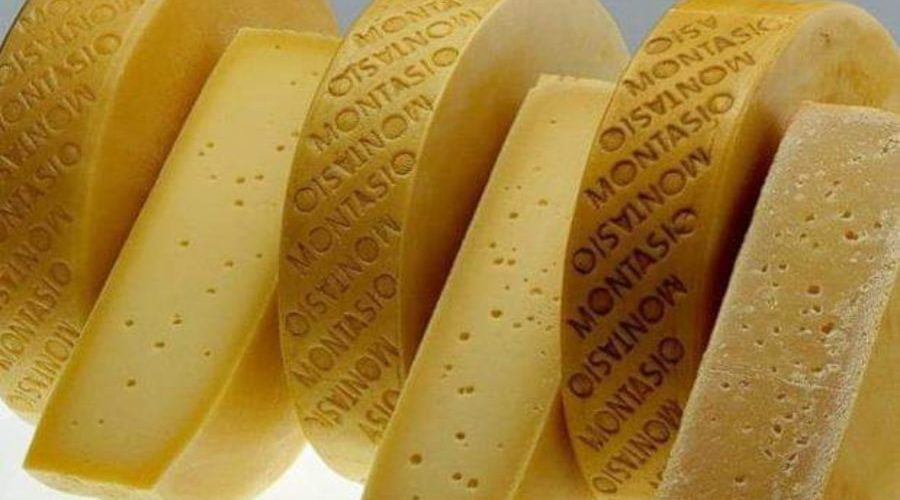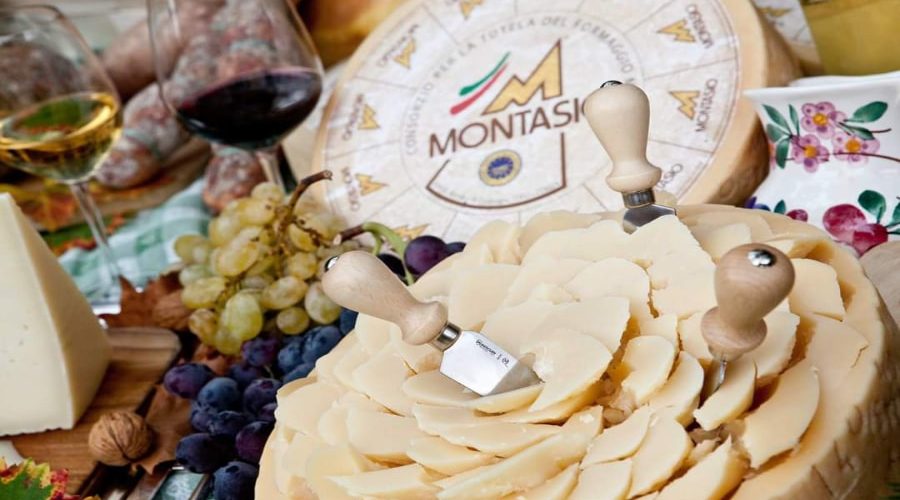Let's face it… It's not our favorite food, neither Cristina's nor mine, we just don't like it, but it's undoubtedly a protagonist of the Friulian culinary tradition. Its history began around year 1200 when it was created by a monk who resided in the convent of the Benedictine monks in the valley of the Julian and Carnic Alps, more precisely in the Montasio plateau.
Created to make the most out of the scarce milk reserves during the harsh months of winter, Montasio was produced with delicate and precise processing techniques that are still used today. The first documents that show its traces are the price lists of the city of San Daniele dating back to 1775. From these writings it is clear that Montasio was considered very valuable, since its price was much higher than the average cheese at the time.
It is produced exclusively with cow's milk from cattle raised in mountain pastures and fed with native herbs of the area. The final goal of milk processing is to best preserve all the organoleptic characteristics of the raw whey, without altering its original microbial and bacterial flora.
Raw milk, after milking, is subjected to fermentation with a graft of low acid lactic ferments and pasteurized at low temperatures. The curd is treated with the a lyre, a particular instrument that resembles its musical counterpart. After that the cheese-dough is finally extracted and purged from the whey before being pressed and rested in the molds that imprint the name Montasio on its side. There are 4 types of Montasio according to the seasoning:
- Fresh Montasio with a minimum aging of 60 days,
- Semi-seasoned Montasio with a minimum maturation of 4 months,
- Montasio matured with a minimum maturation of 10 months,
- Montasio stravecchio with a minimum aging of 18 months.
It is a DOP (denominazione di origine protetta - protected designation of origin) product, it has a cylindrical shape with a diameter of about 30-35 centimeters, a side of 8 centimeters and a weight that varies between 6 and 8 kg. The rind of Montasio is thin and smooth, with a straw yellow color and gradually harder and more intense color with longer aging. The paste is fresh and compact, white in color, and becomes harder and more crumbly with aging. Its flavor is delicate but becomes more intense and spicy in the very old Montasio. It is widely used in the kitchen both as a table cheese combined with honey and jams, and as an ingredient for the creation of excellent typical Friulian recipes such as Frico.





